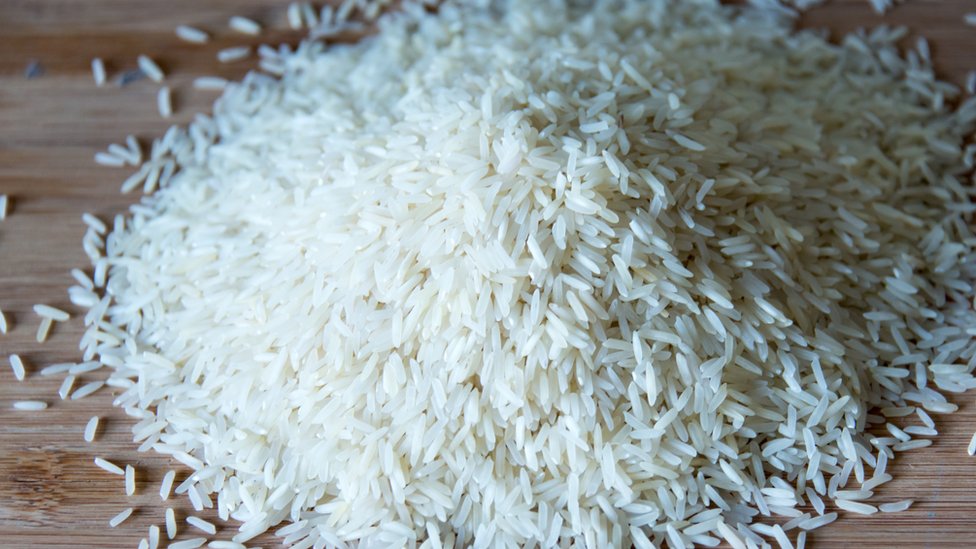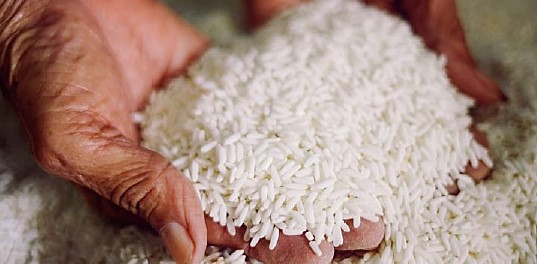Rice is a staple food in many households around the world, providing a primary source of carbohydrates and energy. However, not all rice varieties are beneficial for health. Some types may contain harmful substances, including toxins, synthetic additives, or heavy metals, which can have long-term negative effects on the body. Consuming low-quality or contaminated rice may increase the risk of digestive issues, organ damage, and chronic diseases.
To maintain optimal health, it is essential to choose rice varieties carefully. Here are three types of rice that should be avoided or consumed with caution.
1. Synthetic or Plastic Rice
One of the most alarming food frauds in recent years involves fake rice, often referred to as “plastic rice.” This counterfeit product is made from a combination of synthetic materials, such as plastic and potato starch, and shaped to resemble real rice grains. Due to its appearance, it can be difficult to distinguish from authentic rice, making it a serious concern for consumers.

How to Identify Plastic Rice:
-When placed in water, it floats instead of sinking to the bottom.
-It emits a strong plastic-like odor when heated.
-If left in water for an extended period, it does not decompose or dissolve naturally.
-When burned, it melts like plastic rather than turning into ash.
Health Risks of Consuming Plastic Rice:
-Causes severe digestive issues, including bloating, indigestion, and constipation.
-Can lead to toxic buildup in the body, increasing the risk of long-term organ damage.
-May negatively affect liver and kidney function due to synthetic chemical exposure.
Prolonged consumption can contribute to metabolic disorders and immune system weakening.
2. Arsenic-Contaminated Rice
Arsenic is a toxic heavy metal found naturally in soil and water, but industrial pollution has increased its presence in many agricultural areas. Rice is particularly vulnerable to absorbing arsenic because it is often grown in waterlogged fields, where the chemical can accumulate over time.
How to Identify Arsenic-Contaminated Rice:
-Typically grown in regions with a history of industrial pollution or pesticide overuse.
-Brown rice often contains higher arsenic levels than white rice because arsenic accumulates in the outer layers of the grain.
-Rice grown in heavily irrigated regions with contaminated water sources may contain more arsenic.
Health Risks of Arsenic in Rice:
Long-term consumption can lead to chronic arsenic poisoning, which is linked to an increased risk of cancer.
Affects liver and kidney function, potentially leading to organ damage over time.
Can impair brain function, especially in children, by disrupting cognitive development.
May cause skin conditions, cardiovascular diseases, and weakened immunity.
Ways to Reduce Arsenic Exposure:
Rinse rice thoroughly before cooking to remove surface contaminants.
Cook rice with extra water and drain the excess to lower arsenic levels.
Opt for rice varieties from regions known for having lower arsenic contamination.
Choose basmati or jasmine rice, as they tend to have lower arsenic levels compared to other types.
3. Bleached or Artificially Polished Rice
Many commercial rice varieties undergo polishing processes to improve their appearance. Some manufacturers use chemicals like talc, glucose, or even bleach to enhance the whiteness and shine of the grains. While this may make the rice look more appealing, the process strips away essential nutrients, leaving the rice nutritionally deficient.
How to Identify Artificially Polished Rice:
Has an excessively bright white color and an unnatural glossy texture.
Feels unusually smooth when touched compared to natural rice varieties.
When soaked in water, it leaves behind a white or milky residue.

Health Risks of Consuming Polished Rice:
Lacks essential nutrients such as fiber, B vitamins, and minerals, making it less nutritious than unpolished rice.
Has a high glycemic index, which can contribute to blood sugar spikes and increase the risk of diabetes.
May contain residual chemicals used in the bleaching and polishing process, which can accumulate in the body over time.
Regular consumption can lead to nutritional deficiencies and an increased risk of metabolic disorders.
Choosing the Right Rice for Your Health
To safeguard your well-being, it is crucial to select high-quality rice that is free from harmful substances. Here are some key tips for making healthier rice choices:
- Opt for organic and non-GMO rice to reduce exposure to synthetic chemicals and pesticides.
- Choose unpolished or brown rice instead of artificially processed white rice for better nutritional benefits.
- Purchase rice from trusted brands or reputable sources that test for heavy metals and contaminants.
- Properly rinse and cook rice using the right methods to reduce potential toxins, such as arsenic.
- Avoid suspiciously cheap rice varieties that may be counterfeit or of poor quality.
By making informed choices about the rice you consume, you can protect your health and ensure that your diet supports your overall well-being. Selecting natural, nutrient-rich rice varieties will help you maintain balanced nutrition while minimizing exposure to harmful substances.

















